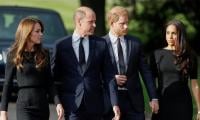From Tehran to Riyadh
The two developments that have come about in the Middle East in recent days – and sent mutually contradictory messages – are fraught with far-reaching implications for the region as well as the globe, including Pakistan. One is the re-election of Hassan Rouhani, arguably the nation’s most potent symbol of moderation, as Iran’s president. The other is US President Donald Trump’s visit to Saudi Arabia during which both sides minced no words in labelling Iran as a state sponsor of terrorism.
As in 2013, Rouhani’s 2017 victory had a resounding effect and precluded a second round face-off with the hardliner Ebrahim Raisi. The outcome of the presidential race is an affirmation of the electorate’s trust in his stance – represented by the July 2015 nuclear deal – on the twin problems facing Iran: reintegration with the world after years of isolation and achieving economic revival through openness.
Iranian society has for years been caught in the throes of a tussle between the forces of moderation and freedom on the one hand and those of conservatism and totalitarianism on the other. Underlying this tussle is a glaring contradiction: while the people of Iran are, by and large, liberal and outward-looking, since the 1979 revolution they have been ruled by a clergy-led establishment wedded to secrecy and suppression as the major instruments of state policy. As a matter of principle, all post-revolutionary governments – such as those in France (1789), Russia (1917) and China (1949) – tend to be despotic and strive to steer the country out of the grave instability triggered by the overthrow of the erstwhile regime.
In the case of Iran, matters were made worse by at least two implications of the revolution. First, the revolution ousted absolute monarchy in a region where this form of government was – and still is – the norm. As a result, other countries in the Gulf suspected Iran of exporting the revolution to its neighbours to their detriment. Those suspicions were not unfounded as Tehran had backed resistance movements in Lebanon (Hezbollah, in particular) and Palestine (Hamas) and sought to shore up its influence on Shia populations residing not only in the Arab states but also in countries like Pakistan. The Arabs, led by Saudi Arabia, responded by intensifying the propagation of their own brand of Islam and cashed in on their petro-dollars rather lavishly for that purpose.
Second, pre-revolutionary Iran was a staunch ally of the US and a linchpin of the Washington-sponsored regional security system. Therefore, the revolution was seen by the Americans as a challenge to their strategic interests in the region. The views of those at the helm in Iran towards the US were equally hostile. This gave rise to the Washington-Tehran antagonism, which persists to date. Iran ended up being billed as a pariah state by the West and its Gulf allies and faced multilateral and bilateral sanctions for its nuclear programme. The sanctions badly affected the economy, particularly foreign trade. Tehran reacted by adopting a more intransigent posture.
Internally, discontent with the regime ratcheted up, strongly expressing itself in the disputed 2009 presidential election. Although it was put down by the regime, the discontent found its next, and finally successful, expression in the 2013 race for the office of the president. Rouhani’s victory embodied the message that Iran was willing to open up and do business with the West. The latter, on its part, reciprocated Iran’s overtures. This led to the deal between Iran and major world powers on limiting Tehran’s nuclear programme in exchange for lifting most of the international sanctions.
More important than the letter of the deal was the underlying spirit: that the West was willing to welcome Iran back to the comity of nations and that Tehran was prepared for a fundamental shift in its foreign policy. Rouhani’s re-election embodies the message that the country is well on its course to do away with the contradiction between social aspirations and state policy.
Be that as it may, the message from the other side is rather discouraging. The Iranian nuclear deal was opposed by Israel, the Gulf States and hardliners in the US because of what it signified. The election of Donald Trump, a staunch opponent of the agreement, signalled that the opposition to it would grow to the point where Washington might even walk out of the agreement.
At the May 21 Arab-Islamic-American Summit hosted by Riyadh, Saudi Arabia and the US were united in condemning Iran for what they called ‘spearheading’ global terrorism and vowed to confront the common adversary together.
The strongly worded speeches by President Trump and King Salman should leave no one in doubt that in the eyes of the US and its Gulf allies, the major threat that the world faces as it combats terrorism is not Daesh or Al-Qaeda or similar brands, but Iran. As a result, the ‘Iranian threat’ needs to be neutralised as a matter of priority rather than the danger posed by the apocalyptic militant outfits. Nothing can be more reassuring for the terrorist organisations and nothing can be more damning for world peace. Not only that, in a region where sectarianism has been one of the principal drivers of conflicts, gunning for one country – given its peculiar demographics – will further fuel the sectarian strife. The major beneficiary, again, will be terrorist organisations.
If Iran is the epicentre of global or regional terrorism, the military alliance of Muslim countries set up in December 2015 with the avowed purpose of defeating militancy in the Muslim world must logically be directed against Tehran and its allies like Syria. The coalition was put together amid mounting criticism that the Arab states – particularly those in the Gulf – were shying away from taking on Daesh. Iran, Iraq and Syria were not invited to become part of the alliance. This strengthened suspicions that the alliance’s real target was not Daesh, but Iran and its allies, and that it represented only a particular sect. Pakistan didn’t formally join the alliance. However, the country allowed its recently retired army chief – who made a name for himself by fighting terrorism – to head its troops on the ground to ensure that the coalition was geared up to serve a noble purpose.
The Riyadh summit, with its unequivocal condemnation of Iran, has put Pakistan in a more awkward situation than it was in before. Pakistan has been one of the spectacles of the proxy war between Iran and Saudi Arabia, which sharpened the sectarian schism in the country. So it is vital for Islamabad to not take sides in the Tehran-Riyadh conflict – whether it is played out in Syria, Yemen or elsewhere. But with its former army chief commanding the coalition’s troops with the consent of the government and the coalition’s sponsors vowing to take on Iran, Pakistan needs a devil’s advocate to assure the world as well as its people of its neutrality.
The writer is a freelancecountributor.
Email: hussainhzaidi@gmail.com
-
 What's Buzzing Around TikTok's 'PineDrama' App: Everything You Need To Know
What's Buzzing Around TikTok's 'PineDrama' App: Everything You Need To Know -
 Who’s Next After Australia’s Under-16s Social Media Ban?
Who’s Next After Australia’s Under-16s Social Media Ban? -
 Do You Have Depression Or Is It Just Monday Blues? Find Out Where Science Stands
Do You Have Depression Or Is It Just Monday Blues? Find Out Where Science Stands -
 Why Claude Is Gaining Momentum In Revolutionizing The AI Landscape
Why Claude Is Gaining Momentum In Revolutionizing The AI Landscape -
 Elon Musk Unveils Plans To Take Humanity To The Moon And Mars
Elon Musk Unveils Plans To Take Humanity To The Moon And Mars -
 Air Pollution May Play A Role In Prostate Cancer Risk, Experts Warn
Air Pollution May Play A Role In Prostate Cancer Risk, Experts Warn -
 Royal Expert Reveals Real Reason King Charles Won't Meet Prince Harry Next Week
Royal Expert Reveals Real Reason King Charles Won't Meet Prince Harry Next Week -
 Ansel Elgort Welcomes His First Baby In Secret
Ansel Elgort Welcomes His First Baby In Secret -
 Startup Aims To Brighten Night Skies With Space Mirrors
Startup Aims To Brighten Night Skies With Space Mirrors -
 Cheaper Cars, Fewer EVs: Trump Administration Shifts ‘auto Policy’ Focus
Cheaper Cars, Fewer EVs: Trump Administration Shifts ‘auto Policy’ Focus -
 Meghan Markle Takes 'breadwinner' Role In Prince Harry's California Life
Meghan Markle Takes 'breadwinner' Role In Prince Harry's California Life -
 Type 2 Diabetes Hidden Trigger In Daily Food Revealed
Type 2 Diabetes Hidden Trigger In Daily Food Revealed -
 Vertical Tabs Coming To Google Chrome
Vertical Tabs Coming To Google Chrome -
 Jane Seymour Reveals THIS Beloved Romance Was 'worst-reviewed' Movie Ever
Jane Seymour Reveals THIS Beloved Romance Was 'worst-reviewed' Movie Ever -
 European Leaders Slam Trump’s Tariff Threat Over Greenland As ‘unacceptable’
European Leaders Slam Trump’s Tariff Threat Over Greenland As ‘unacceptable’ -
 Princess Eugenie Leaves Father Andrew 'devastated' With Big Step: 't's Brooklyn Beckham Level'
Princess Eugenie Leaves Father Andrew 'devastated' With Big Step: 't's Brooklyn Beckham Level'



